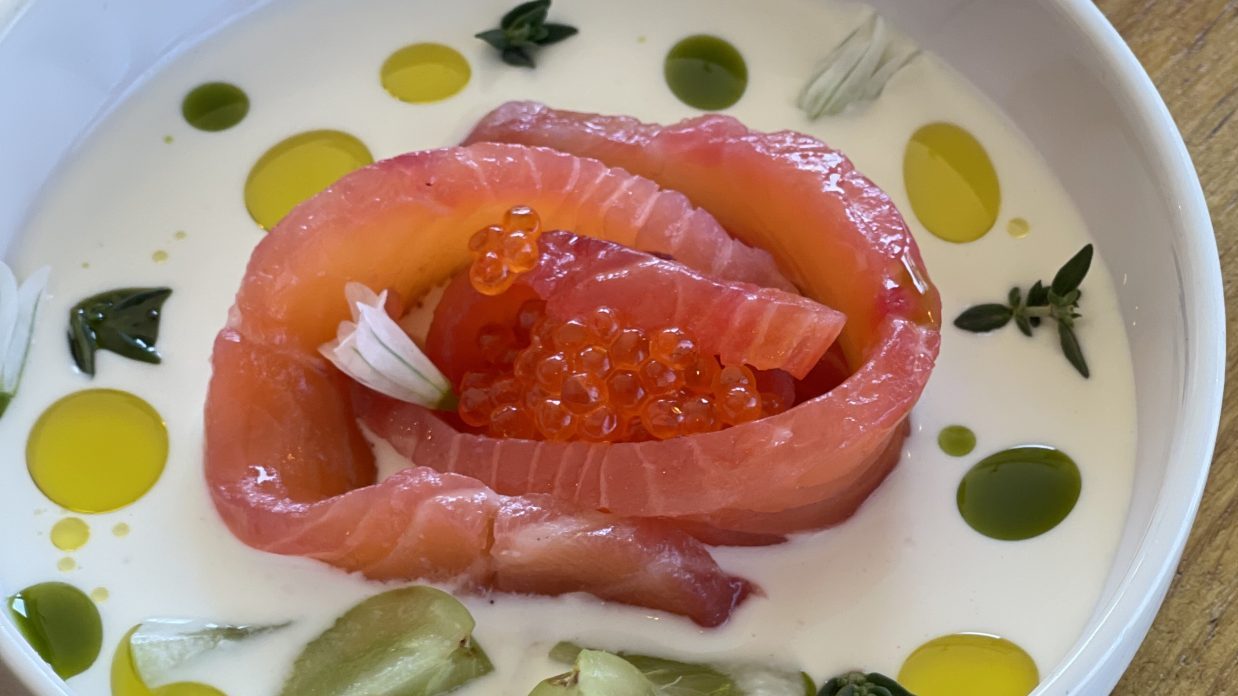I was thinking about sourcing a recipe for turnips. Thérèse Coffey would like that, wouldn’t she? We are suffering from food shortages – tomatoes, lettuce, raspberries and the like: good fresh produce – and our environment secretary has lambasted the nation as wilfully dramatic, instead urging everyone to slip back into a Dickensian mode and make do.
While she is one of the most annoying people to ever exist, Coffey has a point. We should all be eating more seasonally. We are on the cusp of spring and tomatoes, in days gone by, would have been a preserve of the elite.
But then maybe that’s the point? Progress was made 50 or so years ago and food was democratised. Supermarkets, for all their failings, helped propel a nation towards more rounded eating. Suddenly, chickens were available to almost everyone, and vegetables such as asparagus became accessible to even those on lower incomes. Heartening.
In theory, I wholly support affordable food. But our food system is broken. According to British food suppliers and wholesalers, there aren’t shortages per se, rather, it is that supermarkets would rather not pay more for items that are becoming more expensive, because they don’t want to raise prices in store and put off consumers. It’s why greengrocers are full but big chains are bare.
Rampant inflation and a cacophony of other logistical ailments – poor weather, Brexit red tape, soaring energy bills – are causing supply issues here in the UK. It is a sign of the times and a warning of what’s to come. Everything is terrible, essentially, and so whatever the cause and whatever the effects, we must look to be more sustainable, more self-sufficient, more considered in our approach to cultivating food and buying it.
I don’t want to live in a world where fewer people are able to buy fruit and veg; fish and meat too. I don’t want to be in a country that struggles to feed itself. Tomatoes taste better in the summer, but after decades of availability, it would be nothing but regressive to swing back to a world of limitation and constraint. But maybe that’s just what’s going to happen? After all, rumbling beneath it all, is a climate ever tumultuous, something that seems well beyond our control.
In so many restaurants today, techniques, well-trodden in Scandinavia, are being utilised: fermentation, curing and pickling are in vogue. It is because they help us navigate the “hunger gap”, the season we are in now, where most people would eat the food grown in the summer and harvested in the autumn in different ways. In times of plenty, humans would stock up.
And so here is beetroot-cured salmon with ajoblanco. Do not for one moment think this is a true representation of medieval peasants hobbling about fetching the last piece of salted meat from the shed and serving it with watery cabbage soup. This is salmon – use trout if you wish – with beetroot, a summer vegetable, and almonds, which are expensive. But it’s inspired by the times, also making use of stale bread, and it is also delicious.
Oh, and it doesn’t require anything of which we’re currently short. Nor, thankfully, does it call for turnips.
BEETROOT-CURED SALMON WITH AJOBLANCO
INGREDIENTS:
For the beetroot-cured salmon:
500g high-quality salmon loin, skinned
600g salt
400g sugar
1 beetroot, peeled and grated
For the ajoblanco:
40g stale bread
120g blanched almonds
200ml coconut milk
200ml cold water
2 tbsp white wine or cider vinegar
2 cloves garlic
50ml extra virgin olive oil, plus more for finishing
Pinch of salt
METHOD:
Mix the salt, sugar and beetroot together. Cover the salmon with the mixture and tightly clingfilm. Refrigerate and leave for at least 6 hours but ideally overnight.
Once it’s ready, clean it with kitchen paper and slice finely.
Soak the bread in cold water for 5 minutes. Blitz all the bread, garlic, almonds, coconut milk and cold water together. Add the vinegar and the salt.
Slowly drizzle the olive oil in with the blender going, until emulsified. Pass the mixture through a sieve for a finer result. Chill until ready to serve.
To serve: pour some ajoblanco into a small bowl, arrange a couple of slices of salmon neatly in the liquid, add a few leaves of lemon thyme and garnish with some sliced grapes.




